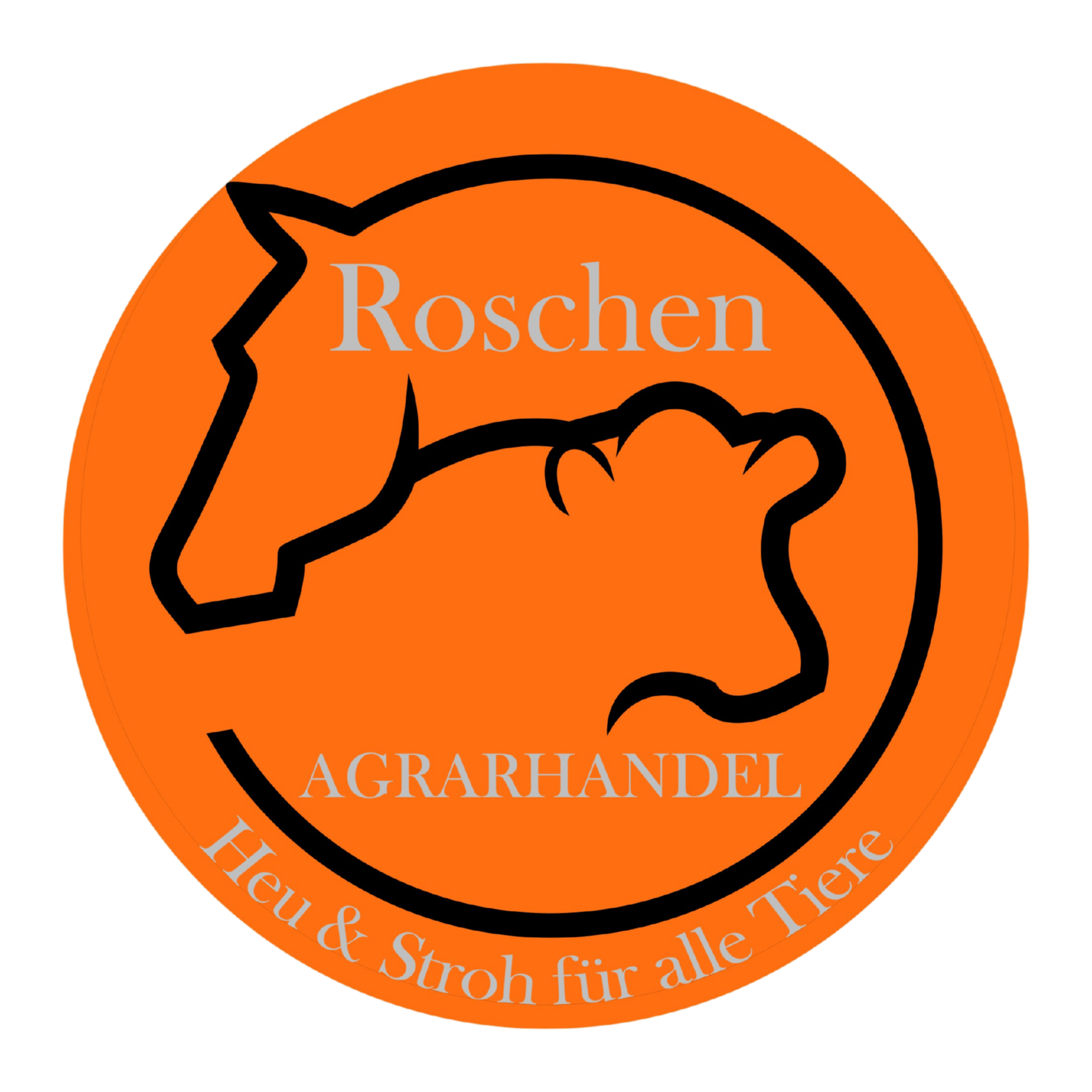Hay
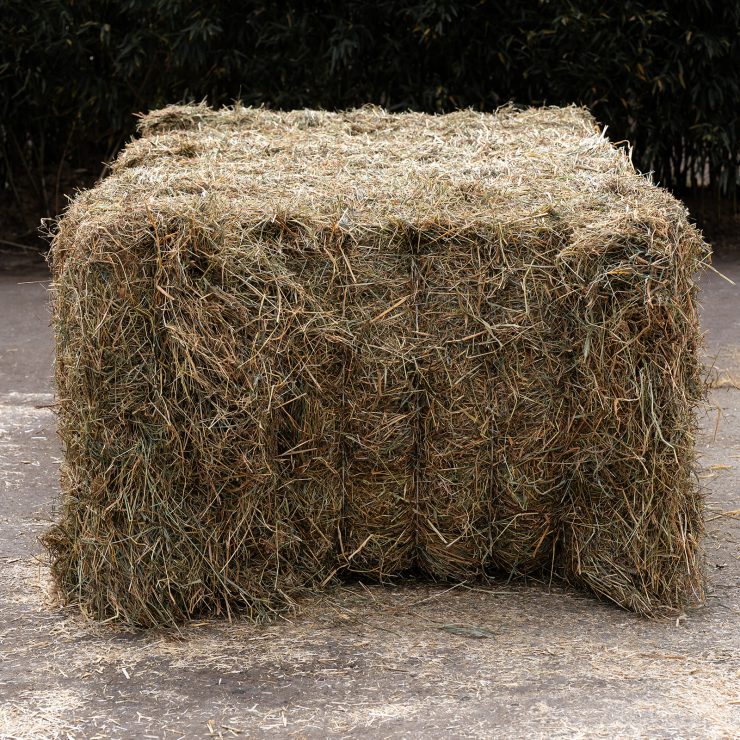
Low-dust quality hay from modern warm-air drying
01
Chamber hay / Warm-air hay
Since 2020, we have been operating a modern hay drying facility for the gentle production of high-quality chamber hay, also known as warm-air hay. This hay is cut shortly before or during flowering and, with a residual moisture content of 25–35%, brought into the drying facility within 36 hours using a forage wagon. There, it is evenly dried in special drying chambers over approximately 96 hours at a constant 40 °C – particularly gentle and nutrient-preserving. The treated hay then has a residual moisture content of less than 10% and is processed into square bales using a hydraulic press. Binding is done with twine to maintain the structure as stably as possible. A special highlight: Before pressing, the hay passes through our modern dedusting system, where it is mechanically cleaned of dust. This makes our chamber hay especially suitable for dust-sensitive animals, such as horses with respiratory issues or young animals.
Soft hay for sensitive mouths and fine feed pellets
02
Chamber hay – 2nd cut
Hay from the second cut is characterized by a finer structure, softer stems, and a higher leaf content. It is especially well-suited for sensitive or young animals such as calves, alpacas, sheep, and various rodents. Due to its tenderness, this hay is also often fed to older animals with dental issues, as it is easier to chew and more digestible. Additionally, second-cut hay is ideal for producing hay pellets and structured feed supplements.
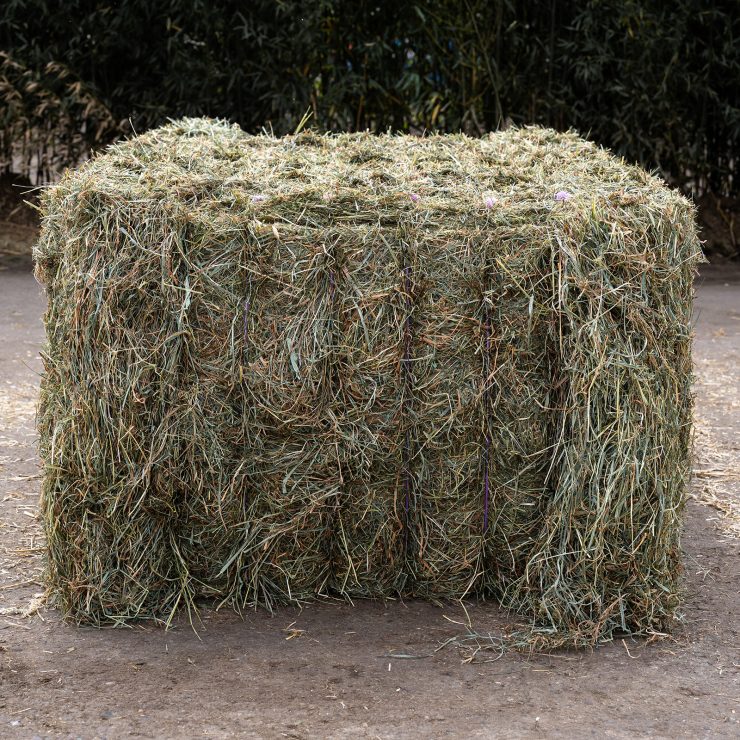

Soft hay for sensitive mouths and fine feed pellets
02
Chamber hay – 2nd cut
Hay from the second cut is characterized by a finer structure, softer stems, and a higher leaf content. It is especially well-suited for sensitive or young animals such as calves, alpacas, sheep, and various rodents. Due to its tenderness, this hay is also often fed to older animals with dental issues, as it is easier to chew and more digestible. Additionally, second-cut hay is ideal for producing hay pellets and structured feed supplements.
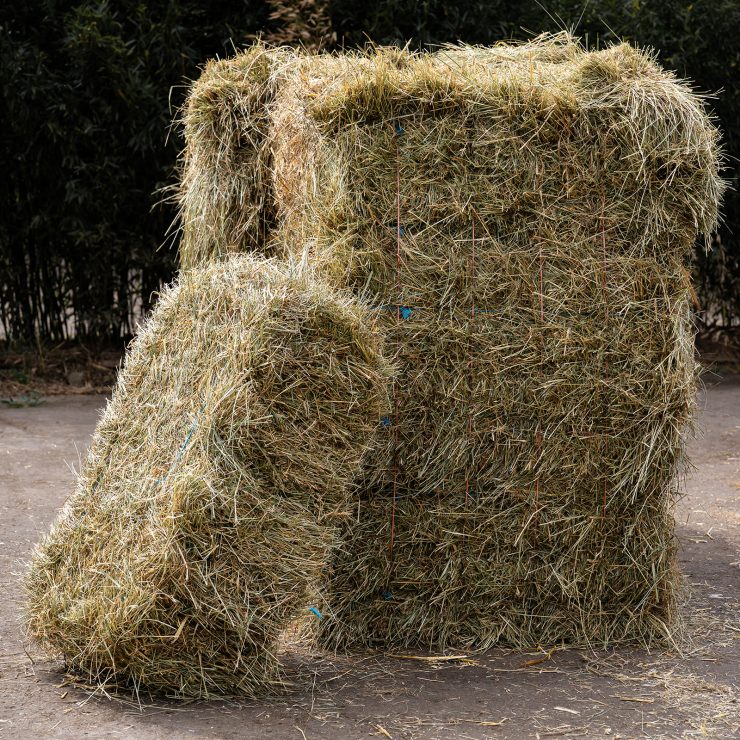
Robust roughage from wet meadows
03
Reed hay
Reed hay is a special type of hay harvested from wetlands, known for its coarse structure and high fiber content. It is ideal for animals with a slow metabolism or low energy requirements – especially for heavy-bodied animals such as buffalo, donkeys, or hardy horse breeds. Due to its origin, reed hay often contains natural herbs and marsh plants, making it a natural and healthy source of roughage.
Robust roughage from wet meadows
03
Reed hay
Reed hay is a special type of hay harvested from wetlands, known for its coarse structure and high fiber content. It is ideal for animals with a slow metabolism or low energy requirements – especially for heavy-bodied animals such as buffalo, donkeys, or hardy horse breeds. Due to its origin, reed hay often contains natural herbs and marsh plants, making it a natural and healthy source of roughage.

Concentrated feed straight from the field
04
Alfalfa hay
Please note: Our alfalfa hay is a specialty product and is made exclusively to order. This ensures that you always receive a fresh, optimally processed product that meets the highest standards. Our alfalfa hay comes from controlled cultivation in Germany and is gently field-dried. It stands out with its high content of raw protein, vitamins, and minerals, making it ideal as a supplementary feed to enhance basic rations. Alfalfa is particularly popular in cattle and horse feeding – whether to support milk production, for broodmares, or as a protein-rich addition for sport horses. Thanks to its natural structure, it also stimulates chewing and saliva production, promoting healthy digestion.
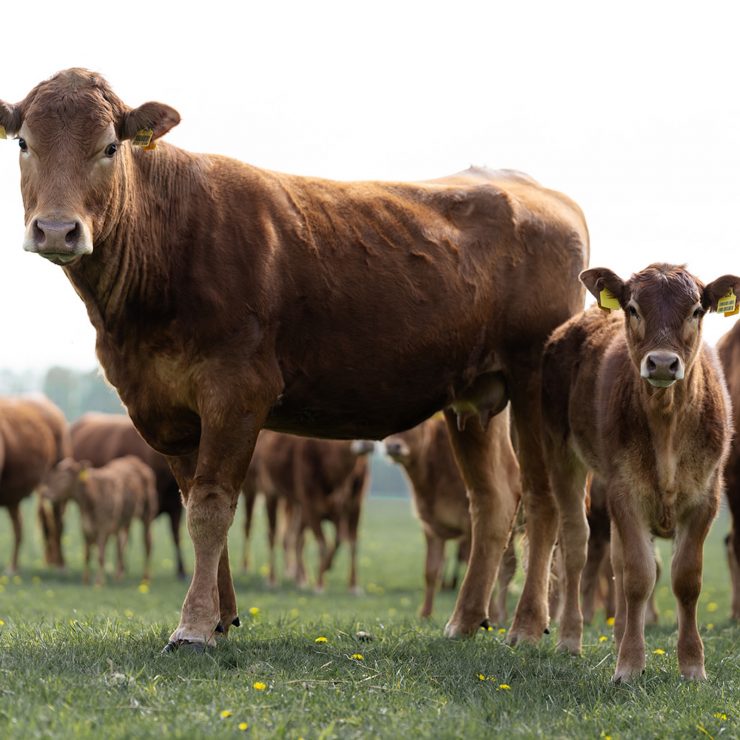

Concentrated feed straight from the field
04
Alfalfa hay
Please note: Our alfalfa hay is a specialty product and is made exclusively to order. This ensures that you always receive a fresh, optimally processed product that meets the highest standards. Our alfalfa hay comes from controlled cultivation in Germany and is gently field-dried. It stands out with its high content of raw protein, vitamins, and minerals, making it ideal as a supplementary feed to enhance basic rations. Alfalfa is particularly popular in cattle and horse feeding – whether to support milk production, for broodmares, or as a protein-rich addition for sport horses. Thanks to its natural structure, it also stimulates chewing and saliva production, promoting healthy digestion.
For healthy and strong animals
Why We
State-of-the-art chamber drying meets decades of experience
If you want to provide your animals with high-quality feed that optimally supports health, well-being, and performance, Roschen Agrarhandel is the right choice. Our warm-air-dried hay is produced using state-of-the-art technology and decades of experience – coming remarkably close to fresh pasture grass. Dairy cattle especially benefit from the high nutrient content, low dust levels, and consistently high quality – and our hay is also an excellent choice for horse owners.
In the nutrient-rich Wümme lowlands of Fischerhude, in the Sankt Jürgen region, and in Worpswede, the Roschen family cultivates over 375 hectares of their own land. For more than 30 years, we have been growing a high-quality grass mix here, with a high proportion of timothy and orchard grass. The first cut takes place after flowering, ensuring optimal structure for ruminant feeding.
While conventional methods leave the grass on the field for several days—exposing it to UV radiation and weather, which leads to the loss of valuable leaf matter and nutrients—we take a different approach with chamber drying: after just around 36 hours in the field, the grass is brought in for drying with a residual moisture content of about 50% – without any prior pressing. In our modern indoor drying facility, it is loosely piled in 5-meter-high bays. Over the course of seven days, a special ventilation system with controlled warm air gently removes the moisture. The result is aromatic, green hay with a residual moisture of around 10% – and maximum preservation of vitamins and trace elements.
Above all, the heat- and light-sensitive β-carotene – a precursor of vitamin A – is largely preserved thanks to the gentle process. For dairy cows in particular, a stable supply of vitamin A is crucial for fertility, metabolism, and immune defense. Farmers in Austria, where this technique is already widely used, report impressive results: an increase in milk yield of up to 40%, significantly lower veterinary costs, and reduced dependence on concentrated feed.
Our hay is also of great interest to horse owners – especially for sensitive or dust-sensitive animals. The low dust content, strong aroma, and consistent energy levels make it a valuable supplement or alternative to conventional horse hay.
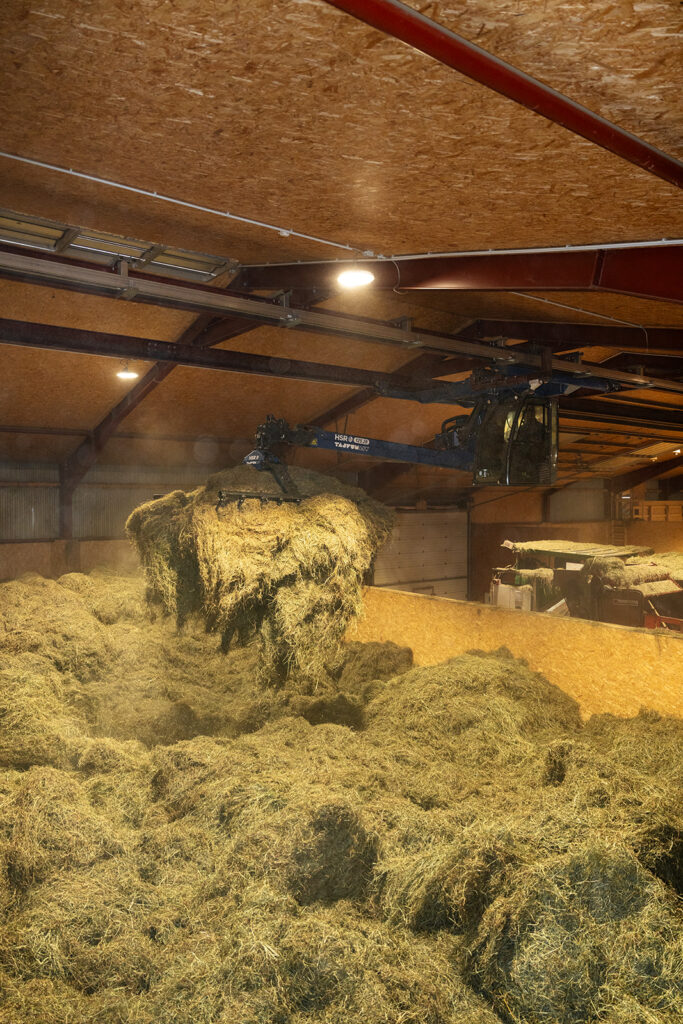
Technical specifications of the drying facility at a glance
Our facility produces around 3,300 tonnes of hot-air dried hayon distributed two Hay barns, each with four drying boxes (50 m length × 20 m in width).
Drying technology:
2x HSR VARIO Elite PLUS 200 Dehumidifier
– Inflow area: 15 m2
Power: 150 kWFans:
– 4x HSR VARIO Elite 1160 / 45 kWControl:
– VARIO+ comfort control with 12" Touch DisplayHay cranes:
– 2x HSR Tajfun Heukran 125.28Airflow:
– Y-Soft, V-Soft and blinds
Efficiency & Sustainability:
Drying of up to 1.400 litres of water per hour
Use of the waste heat from a power unit for energy saving
Conversion of the fan technology to reduce diesel consumption 40,000 litres per year
→ CO₂ savings of around 100 tonnes per year
Regular customers
Years Of Experience
Top Reviews
Location
